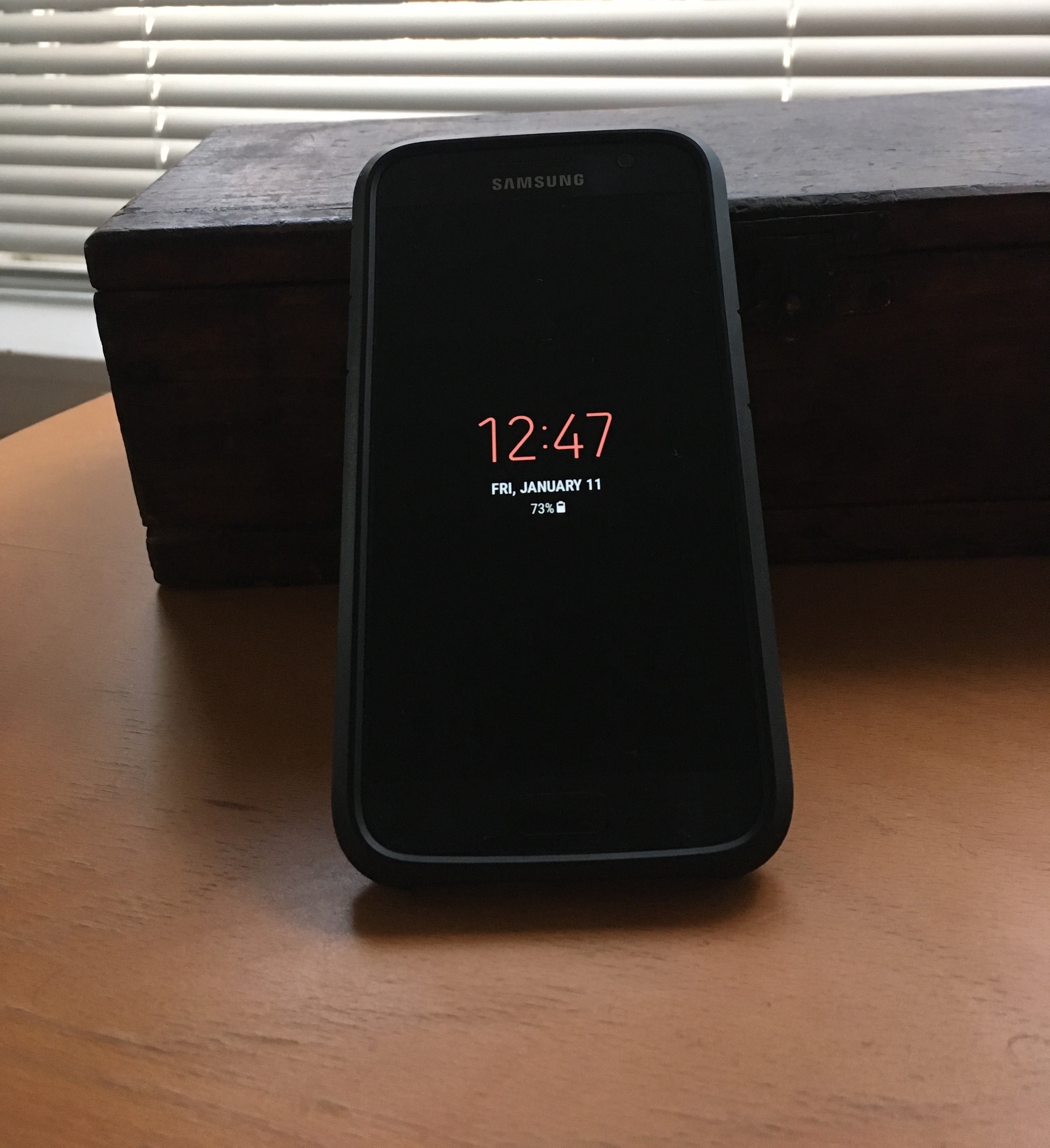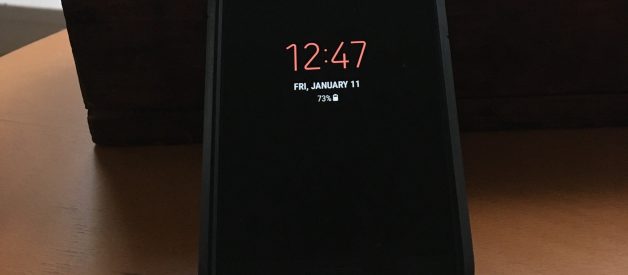One feature unique to Android phones (vis a vis iPhones) is the Always On Display. AoD keeps a small portion of the screen turned on even when the phone is asleep, to display certain types of information. By default this is usually the time, date, and battery level as well as certain types of notifications. Precisely what the AoD shows can be customized in various ways, and the feature has been getting more sophisticated with new versions of Android.
I?ve customized my Always On Display so that the clock face looks sort of like the style of clock radio, the ones with the red glowing digital numbers, that people had in the 80s and 90s. This makes it a sort of familiar face when I wake up in the middle of the night and want to check the time. There are some nice advantages to having an Always On Display, and for me one of them is being able to see my phone in the dark, or if it is resting against a black surface. My S7 is black, and I tend to prefer darker cases. I like how my phone looks like the monolith from 2001: A Space Odyssey (I mean complete black), but it can be nearly invisible in low light if it?s resting on a dark surface like my couch. Unless the AoD is turned on. Then the red digital clock face visibly pops out in the dark.
 The AoD on my Galaxy S7 looks a bit like a 1980s digital clock
The AoD on my Galaxy S7 looks a bit like a 1980s digital clock
I was browsing through some online discussion forums regarding the always-on display feature on phones like the Samsung Galaxy 8 and 9. There is some uncertainty about how the AoD feature works, including how much battery it consumes, and how the implementation guards against things like screen burn.
The official Samsung line is that AoD uses on average less than 1% of the battery per hour. That seems in line with my personal experience with the Galaxy S7, but it?s hard to tell for certain. I?m talking about my informal observations, not methodical testing. With a moderate level of phone use, however, I?m still getting over 24-hours of battery life per full charge with AoD on. Samsung also makes the case that AoD can reduce battery consumption because you wake your phone up less often to check the time or a song title.
According to Tim Schiesser, the always-on display on the Galaxy S7 uses on average between 0.59% and 0.65% of the battery per hour. Schiesser makes the important point that AoD does not consume power when you?re actually using your phone, when the screen is fully on. In a pocket or a purse the feature also uses a minuscule amount of energy, because the AoD shuts off if the proximity and light sensors detect that the phone is in a dark, enclosed space. Schiesser estimates that in a typical 16-hour day of mixed use ? sometimes using your phone, sometimes it?s in a pocket or purse, sometimes it?s on a desk with the AoD displaying its clock face ? a Galaxy S7 might only lose 2.75% more with the AoD turned on. It?s the difference between having a battery level of 20% at the end of the day versus a battery level of 17.25%. Not a huge sacrifice.
As my phone gets older, however, I find I?m using it less. That makes AoD relatively more of an energy drain. On average, I?m now using only about 2% of the battery an hour without AoD on. Adding 1% to that per hour would be a 50% increase in energy usage. If you use your phone a great deal, AoD uses relatively little energy compared to other things and uses no energy when the screen is fully on. However, if you are a light user it uses relatively more power.
Some online comments I?ve read express concerns about screen burn when using AoD, because it?s not possible to see the image moving around the screen as you would expect if you were trying to prevent screen burn. I believe with Samsung phones the images do shift position slightly, but the pixel movement is very subtle. Your clock face (or whatever you?re choosing to display) doesn?t move all around the screen. It just moves enough so that the same pixels are not always being used. When you unlock the phone, then lock it again, the AoD image will appear in a different spot on the screen and then shift subtly around that same spot. I?ve been using AoD on and off for 2.5 years with my S7 and I can?t see any sign or trace of screen burn.
You may get more or less use out of a feature like Always On Display. I find it somewhat useful, personally. For me, the added utility of the feature is sometimes worth the tradeoff of slightly reduced battery life.


